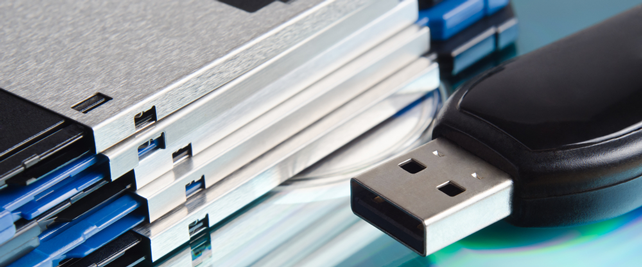
As is the case with many technological inventions, particularly of electronic devices, the history of flash drives and NAND memory chips is rather conflicting. Disputes have arisen as to who should hold the patent for this useful and increasingly popular gadget. A USB flash drive is a portable unit capable of storing various forms of data from a computer’s USB port. Although they have less storing capacity than a computer’s hard drive, they are convenient because they fit in a pocket or on a key-chain.
Flash drives are especially popular with academic institutions because they are a convenient way to transfer data from one PC to the next, eliminating the need to save a document to a particular computer.
What Came First?
The first predecessors of USB drives were CMOS, or Complementary Metal-Oxide-Semiconductor, and were in almost every standard electronic device. These were first designed in 1963 and then produced in 1968. The downside to the CMOS chips was that they were capable of electro-static discharge and were fragile because they needed a constant power source. The next step in memory flash drives was EEPROM (Electric Erasable Programmable Read Only Memory.) The EEPROM chips were an improvement because they were not in need of a power source. Original EERPOM chips held up to 64k or 65,536 bytes of memory, and their major flaw was that their write cycles would wear out quickly.
After EEPROM chips were invented, flash drive memory was introduced to the market. One online source claims that Dr. Fujio Masuoka was the first to invent NOR and NAND technology while working for Toshiba. Intel in 1988 introduced flash drives as well as Toshiba and Samsung in 1989. The chips were embedded in electronic devices for data storage. M-systems (now SanDisk) is currently leading the industry in flash disk technology and in 1995 introduced flash or NAND-type memory in retail products.
In 1998, IBM came out with their version of flash drives as a way to replace their ThinkPad line. Without patenting their new technology, IBM contracted M-systems (SanDisk) to manufacture and develop the flash technology. M-systems took the opportunity to patent their new invention, calling it Disgo. It first came out with 8, 16, 32, 64 MB of memory capability. Asian manufacturers soon followed suit in developing their own versions of this new and improved memory technology.
Trek Technology and IBM, in 2000, introduced their 8MB flash drives which performed five times better than floppy disks. A few years later, Trek Technology filed a lawsuit against distributors of the flash drives, claiming to be the first to develop it. A Singapore court ruled in favor of Trek Technology, while a U.K. court revoked the Trek Technology patent.
Even though the history of flash drives and NAND memory chips this" new wave of technology” is perplexing and riddled with dispute, the technology itself is thriving as an international solution to an international technological issue. Easy to use and affordable for anyone, flash drives are the most convenient way to store, rewrite, reprogram, and transfer data in today's highly dependent electronic culture.















